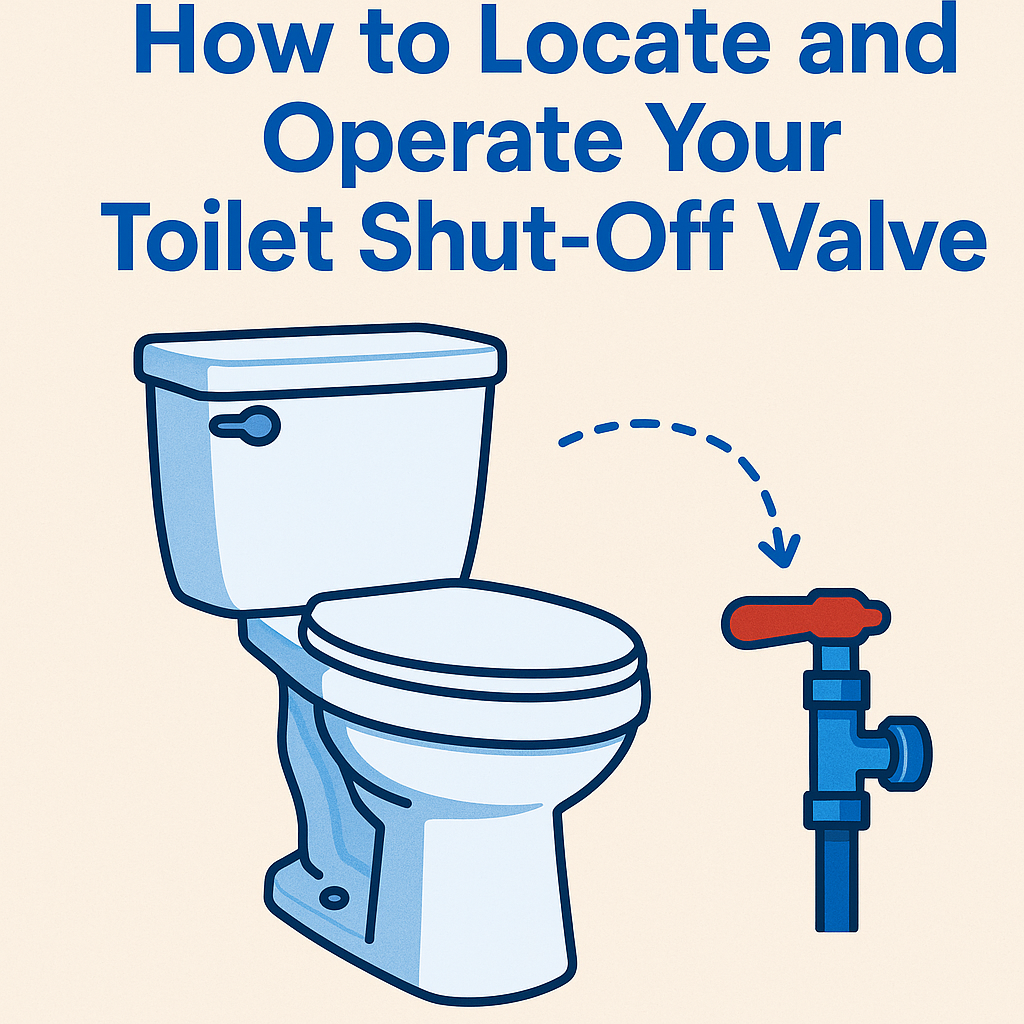How to Locate and Operate Your Toilet Shut-Off Valve?
When faced with a plumbing emergency like a toilet overflow or a constant leak, knowing how to quickly shut off the water supply is critical. At Neighborhood Plumbing & Drain, we believe that every homeowner should know where their toilet shut-off valve is and how to operate it. This simple knowledge can help you prevent costly water damage and provide peace of mind during unexpected situations.
What Is a Toilet Shut-Off Valve?
The toilet shut-off valve, also known as a stop valve, is a small but essential component of your plumbing system. It controls the flow of water to your toilet, allowing you to stop the water supply without affecting the rest of your home. This valve is especially useful when performing toilet repairs or stopping a leak before it causes significant damage.
Common Locations for Toilet Shut-Off Valves
In most modern homes, the shut-off valve is conveniently located near the base of the toilet. However, depending on your home’s design and plumbing layout, it may be positioned in less obvious places. Here’s where to look:
- Directly Behind the Toilet: The most common location is behind the toilet, near where the water supply line connects to the tank. Look for a small, oval-shaped handle attached to a pipe coming out of the wall or floor.
- On the Side Wall or Floor: In some cases, the valve may be installed on the side wall or floor next to the toilet rather than directly behind it.
- Inside a Bathroom Cabinet or Closet: In older homes or custom bathroom designs, you might find the shut-off valve hidden inside a cabinet or closet near the bathroom.
- Basement or Crawl Space Access: For homes with more complex plumbing setups, the valve could be located in the basement or crawl space, especially if there are no visible valves near the toilet itself.
How to Turn Off Your Toilet’s Shut-Off Valve?
Once you’ve located the valve, shutting off the water is usually a simple task:
- Turn the Valve Clockwise: Most shut-off valves are designed to close when turned to the right (clockwise). Keep turning until you feel resistance and the water stops flowing.
- Check for Leaks: After closing the valve, flush the toilet to confirm that the water supply is indeed off. If water continues to flow, the valve may not be fully closed or may be faulty.
- Don’t Force a Stuck Valve: If the valve hasn’t been used in years, it might be stuck. Forcing it could cause damage. In this case, it’s best to call a professional plumber to handle the situation safely.
What If You Can’t Find or Operate the Valve?
If you’re unable to locate the shut-off valve or if it’s not working properly, you can turn off your home’s main water supply as a temporary solution. However, this will cut water to your entire house, so it’s best used only in urgent situations.
For a long-term fix, our licensed plumbers at Neighborhood Plumbing & Drain can help locate hidden shut-off valves, replace faulty ones, or install new, easy-to-reach valves for your convenience.
When Should You Call a Professional?
While turning off a shut-off valve is typically straightforward, there are situations where professional help is the safest and most effective option:
- The valve is corroded or damaged.
- You cannot find the shut-off valve after a thorough search.
- The valve won’t fully stop the water flow even when closed.
- You want to upgrade to a more accessible or modern valve design.
At Neighborhood Plumbing & Drain, we’re committed to helping homeowners across Central Texas stay prepared and protected from plumbing emergencies. Whether you need assistance with a toilet repair, valve replacement, or a full plumbing inspection, our friendly team is just a call away.
Need Help Locating or Replacing a Shut-Off Valve?
Contact Neighborhood Plumbing & Drain or call 512-266-3566 today for fast, reliable service. We’re here to keep your plumbing system running smoothly—no stress, no mess.
Frequently Asked Questions About Toilet Shut-Off Valves
1. How do I know if my toilet shut-off valve is faulty?
Signs of a faulty valve include difficulty turning it, water continuing to flow after it’s closed, or visible corrosion and leaks around the valve. If you experience any of these issues, it’s best to have it inspected by a professional plumber.
2. Can I replace a toilet shut-off valve myself?
While some homeowners with plumbing experience may attempt this, improper installation can lead to leaks or water damage. For safety and long-term reliability, we recommend hiring a licensed plumber like the team at Neighborhood Plumbing & Drain.
3. What type of shut-off valve is best for my toilet?
Quarter-turn ball valves are a popular modern choice due to their durability and ease of operation. If your home has older gate valves, it might be a good time to consider an upgrade.
4. Where is the main water shut-off valve in my home?
The main shut-off valve is typically located near where the water line enters your home—often in a garage, basement, utility area, or outside near the water meter. If you’re unsure, our team can help you locate it during a plumbing inspection.
5. How often should I test my toilet shut-off valve?
It’s a good idea to check and operate the valve at least once a year to ensure it isn’t stuck and is functioning properly. Regular maintenance helps avoid surprises during emergencies.

